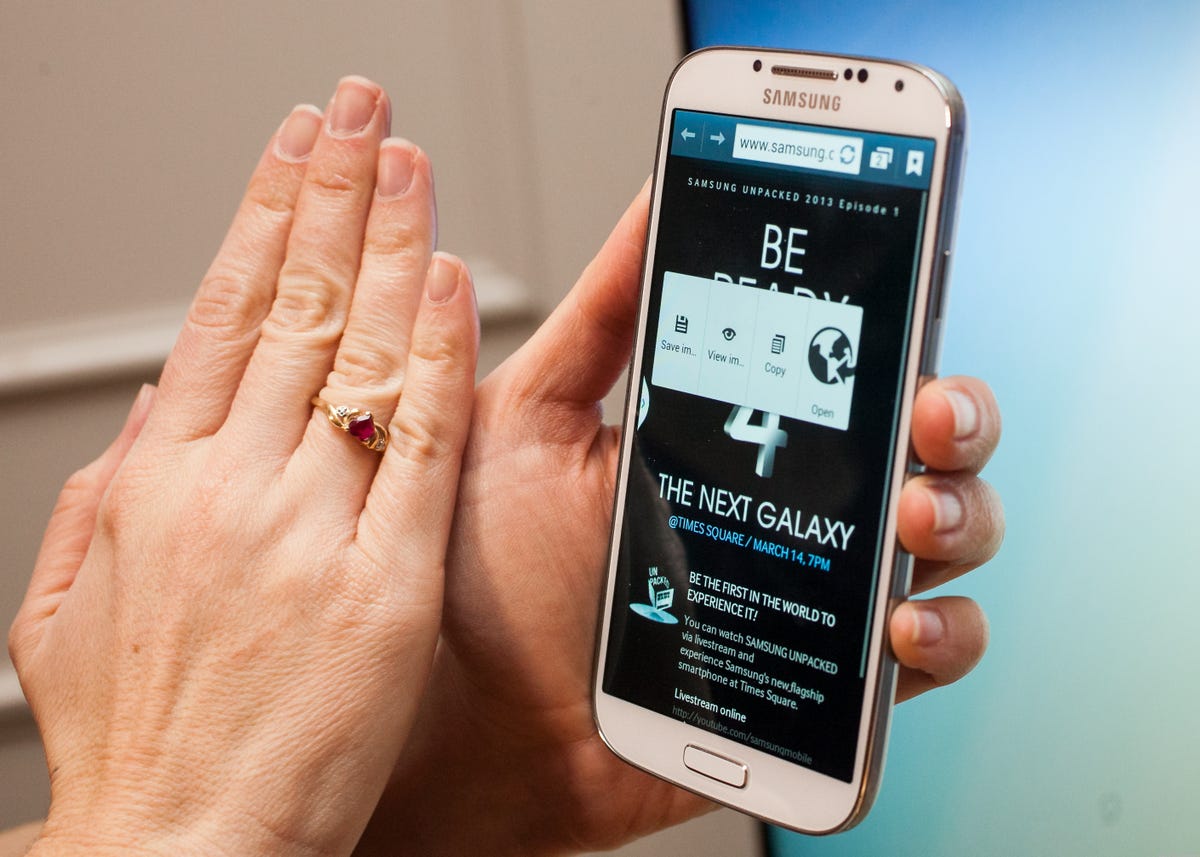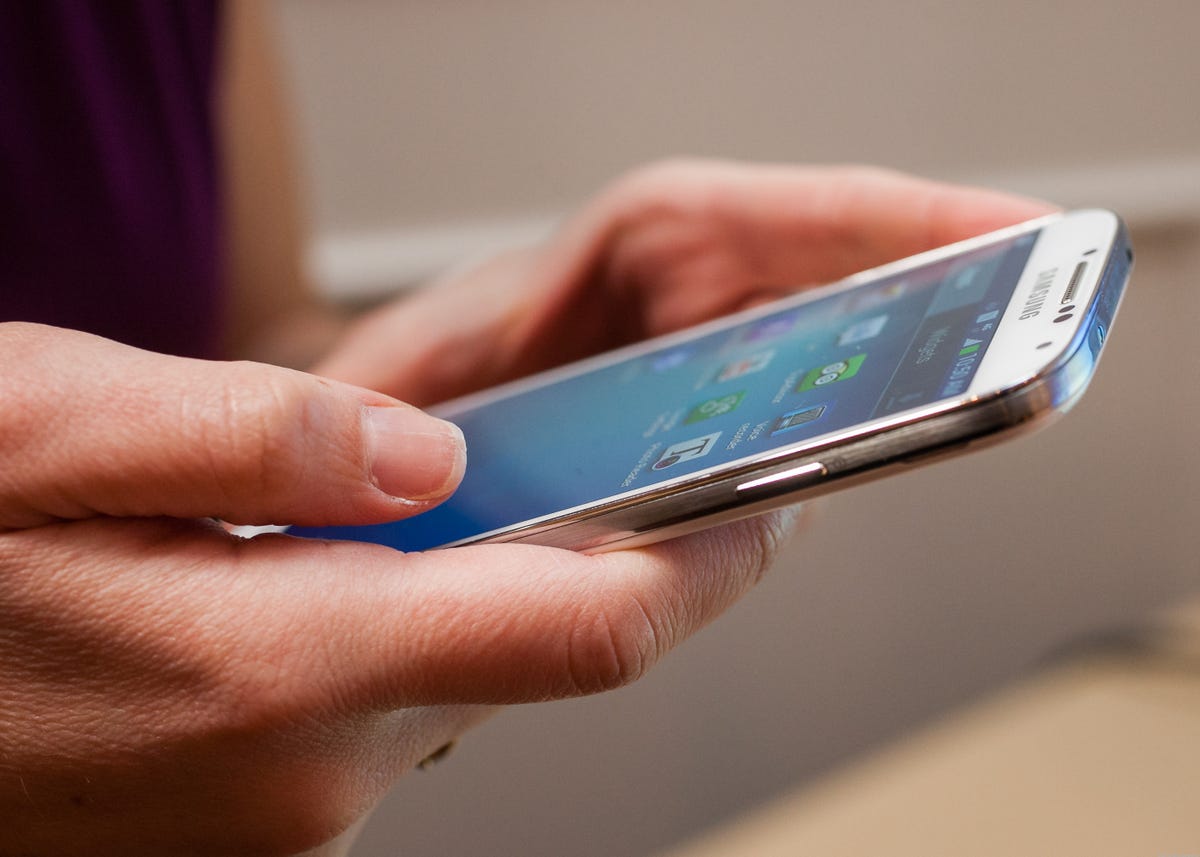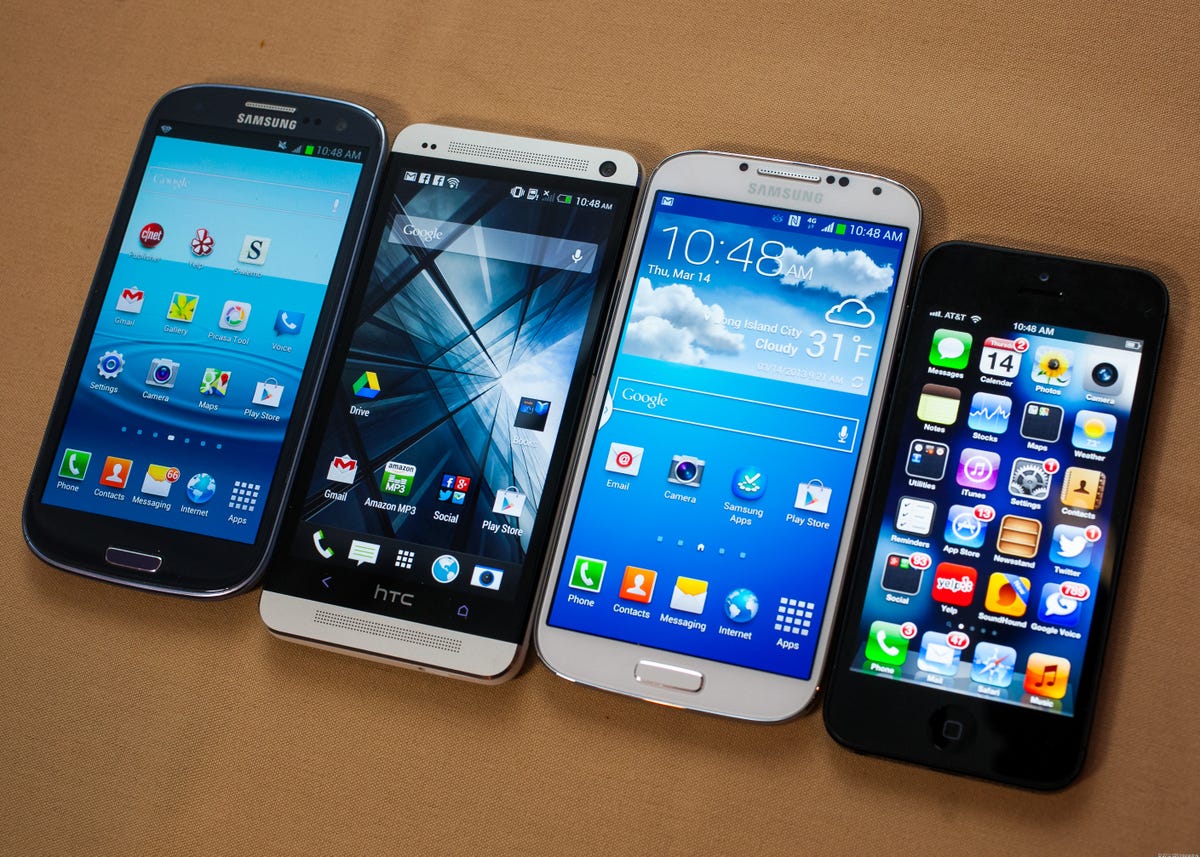

Now playing:
Watch this:
Samsung’s Galaxy S4 powerhouse
3:28
Samsung’s long-awaited and much-hyped Samsung Galaxy S4 finally is here. CNET has rendered its official review, which you can read here, and early-bird customers will get the device in their hands this week. As one of the biggest smartphone releases of 2013 so far, the Galaxy S4 generated a lot of discussion in the five weeks since its blowout and bizarre launch event in New York. Below are the most vital details about the handset, where it will land, and when you can get it.
What are the GS4’s most standout features?
That depends; how long do you have? Believe me when I say that Samsung didn’t restrain itself when adding features to the GS4. The device has just about everything you’d ever need and then some. As for basic specs, the highlights include an IR blaster for controlling your TV, a 13-megapixel camera with 1080p HD video, a 2-megapixel front camera, a SwiftKey-powered keyboard, a powerful processor (more on that below), a 2,600mAh battery, 2GB of RAM, 64GB of internal storage with another 64GB available through the microSD card slot, NFC, Bluetooth, Wi-Fi, and support for 4G LTE networks.
Editors’ note: This FAQ was originally published on March 15, 2013, and has been updated with additional information.
Meet the stunning Samsung Galaxy S4 (pictures)






Yet, it’s the oodles of software that really set the GS4 apart. Go to the review for the full list, but the features will include a better S Voice (a Siri-like voice assistant), S Health (fitness tracking), Group Play (wireless media sharing), S Voice Drive (hands-free voice control), S Translator (instant text and voice translation), Samsung’s ChatOn messenger app, screen-sharing, video calling, and a ton of camera tools and editing apps. Read CNET’s review for the full scoop.
All of that amounts to a very respectable list. But to paraphrase Jessica Dolcourt, most of the GS4’s featurettes aren’t essential and some aren’t even very useful. Though none stands out as a must-have, cannot-possibly-live-without extra, the features do add up to a compelling testament that the Galaxy S4 is more than a step ahead of the pack.
The Galaxy S4’s software up close






What else can you tell me about the design?
Samsung didn’t deviate from its design fundamentals with the GS4, so the plastic body remains, with small tweaks. Samsung says it uses plastic to keep its devices affordable and easy to produce in mass numbers. Personally, I don’t consider plastic to be a deal breaker, and it can be pretty durable, but I understand if it turns you off. Fortunately, the display shows needed improvements over the GS3’s. It’s bright, the colors are crisp and rich, and you can use the touch interface while wearing gloves.
What’s different from the Samsung Galaxy S3?
Lynn La details the major spec differences here, but the short version is that the S4 is a lighter and thinner GS3 with modestly upgraded specs and more-specialized software. On the whole, it looks a lot like the GS3, but it has straighter lines, and the display is larger and has a higher resolution (5 inches, 1080p). Also, the battery capacity is higher (2,600mAh), the processor is faster (see next question), and the rear-facing camera gets a boost, from 8 megapixels to 13. In other words, it’s a firm stride forward from the GS3 rather than a giant leap.
Related stories
- Samsung Galaxy S4 full review (with video)
- Samsung has an unstoppable hit in the Galaxy S4
- Beyond the Galaxy S4 hype: What now, Samsung?
- Samsung’s S View cover offers a sneak peek at your Galaxy S4
- How the Samsung Galaxy S4 affects other Android makers
- Many Galaxy S4 software features will come to S3
Will it be four-core or eight-core?
Like the GS3, the GS4 will come in two different versions. One model will run on a 1.9GHz quad-core Qualcomm Snapdragon 600 series processor, and the other will have a 1.6GHz eight-core chipset, which is Samsung’s Exynos 5 Octa silicon. At first, Samsung didn’t reveal which versions would land in the United States or anywhere else. On April 17, though, the company said that U.S. carriers would get the quad-core handset along with most other regions. If you’re upset by the discrepancy, Samsung co-CEO J.K. Shin says that shouldn’t matter. Read this post by Eric Franklin for more on the Galaxy S4’s processor.
Which Android OS does it use?
The GS4 uses the latest version of Android available, Jelly Bean 4.2.2. That’s great for now, but keep in mind that Google I/O kicks off in four weeks. That’s when Google should announce the next version of Android, Key Lime Pie.
Sure, we had the same situation last year — the Ice Cream Sandwich-equipped GS3 landed just before we heard about Jelly Bean — but I hope that the GS4 will get fast-tracked for an upgrade. The S4 also has Samsung’s TouchWiz overlay. (I’m not a fan.)
How does eye-tracking work?
As expected, the GS4 does have eye-tracking technology. Though this feature is rare in smartphones, the GS4 builds on the eye-tracking features we saw in the GS3. On that phone, you could keep the screen from dimming when your eyes were on it. In the GS4, however, we get a bit more. For instance, tilting the screen up or down while reading a Web site will make the page scroll accordingly. Also, the Smart Pause feature halts a video you’re watching when you look away. When you look back, it will resume playing. The GS4 also responds to several gestures, which Jessica details in the review.
Which U.S. carriers will get it? And for what price?
So far, the handset is coming to seven U.S. wireless providers. That list includes the “Big Four” national carriers (T-Mobile, AT&T, Sprint, and Verizon Wireless) plus Cricket, U.S. Cellular, and C Spire. Ting, an MVNO that uses Sprint’s network, will sell the phone, too. AT&T started shipping to some customers this week with other carriers following in the next few days. The price with contract ranges between $149 and $249. You can find specific pricing and release date information here. But act fast if you want to order, as some carriers already have pushed back their ship dates due to high demand.

Sarah Tew/CNET
What about carriers in other regions?
In Australia, Optus, Virgin, Vodafone, and Telstra will get the phone. In Europe and the United Kingdom, expect the GS4 to come to Deutsche Telekom, EE, H3G, Orange, Telenor, O2, Tesco Mobile, Three, T-Mobile, Virgin Media, TeliaSonera, Telefonica, and Vodafone (exact availability will depend on country). In Singapore, you’ll be able to use the device with M1, SingTel, and StarHub.


Sarah Tew/CNET
Will it support wireless charging?
Strangely, it was tough to get a straight answer out of Samsung on this topic at the GS4’s unveiling. We know now, though, that the S4 supports wireless charging, but it will be an optional feature and you’ll have to pay almost $100 to get it. Not only will wireless charging require a new back cover ($39.99), but also you’ll need a dedicated wireless charger ($59.99). Neither accessory, though, is currently on sale.
Should I buy it or wait?
That depends on what phone you have now. If you own a GS3, I don’t think it’s worth it to upgrade, even if you can get the GS4 at the subsidized price. If your carrier is willing to really cut you a deal by trading in your old phone, then it might be worth it, but I’d still wait a bit to see if prices come down. On the other hand, if you have a phone that’s more than a couple of years old and you’ve been pining for a new flagship Android handset, then I’d give it careful consideration. For more on this question, see this Ask Maggie column.
Alternatively, you could wait to see what comes — and rest assured something else will come — but I always liken choosing a phone to buying a plane ticket. The options and prices in both markets change daily. So, if you see something that you like at a comfortable price, then you might as well buy it. You might find something better the next day. But then again, you might not.


Sarah Tew/CNET
How does it compare with the HTC One?
HTC’s newest smartphone wonder, which launched just at the beginning of February, offers comparable specs and a gorgeous all-metal design that feels sturdier and far superior. HTC doesn’t throw in many software attractions, but the One has everything that smartphone power users will need. Here’s a handy spec comparison chart. Also, here’s Brian Bennett’s full One review. He calls it the “fastest, most beautiful phone I’ve ever used.”
Yet, an important point against the One is that it’s scheduled to arrive at fewer carriers (AT&T, Sprint, and T-Mobile in the United States). That means that fewer consumers can buy it (without switching carriers, of course), but it’s also a perpetual factor in the HTC-Samsung war. While HTC’s phones can hold their own against Samsung’s devices (the One X, for example, outdid the GS3 in some ways), Samsung can far outspend HTC on marketing, advertising, and distribution. In a perfect world that wouldn’t affect which handset eventually wins in sales, but we don’t live in a perfect world. And while HTC has accused Samsung of focusing more on show than innovation, HTC still has an uphill battle to fight.
Is it better than the iPhone?
Well, hello, loaded question. I’ll say only that the GS4 will take the GS3’s place as the iPhone’s biggest competition. The point here is that Samsung is doubling down on making its phones as different from the iPhone as it possibly can. The GS4 is the biggest and most powerful Galaxy ever, it’s packed with every kind of software you can imagine, and it diligently checks every box on the list of hot smartphone trends (a large screen, an eight-core chip, and so on). Unlike Apple, Samsung has never shied away from detailing every spec and including bleeding-edge technology in its devices. The GS4 is no different. In fact, you can call it the anti-iPhone.
Senior Editor Jessica Dolcourt contributed to this report.


Now playing:
Watch this:
Galaxy S4 vs iPhone and others
4:49



